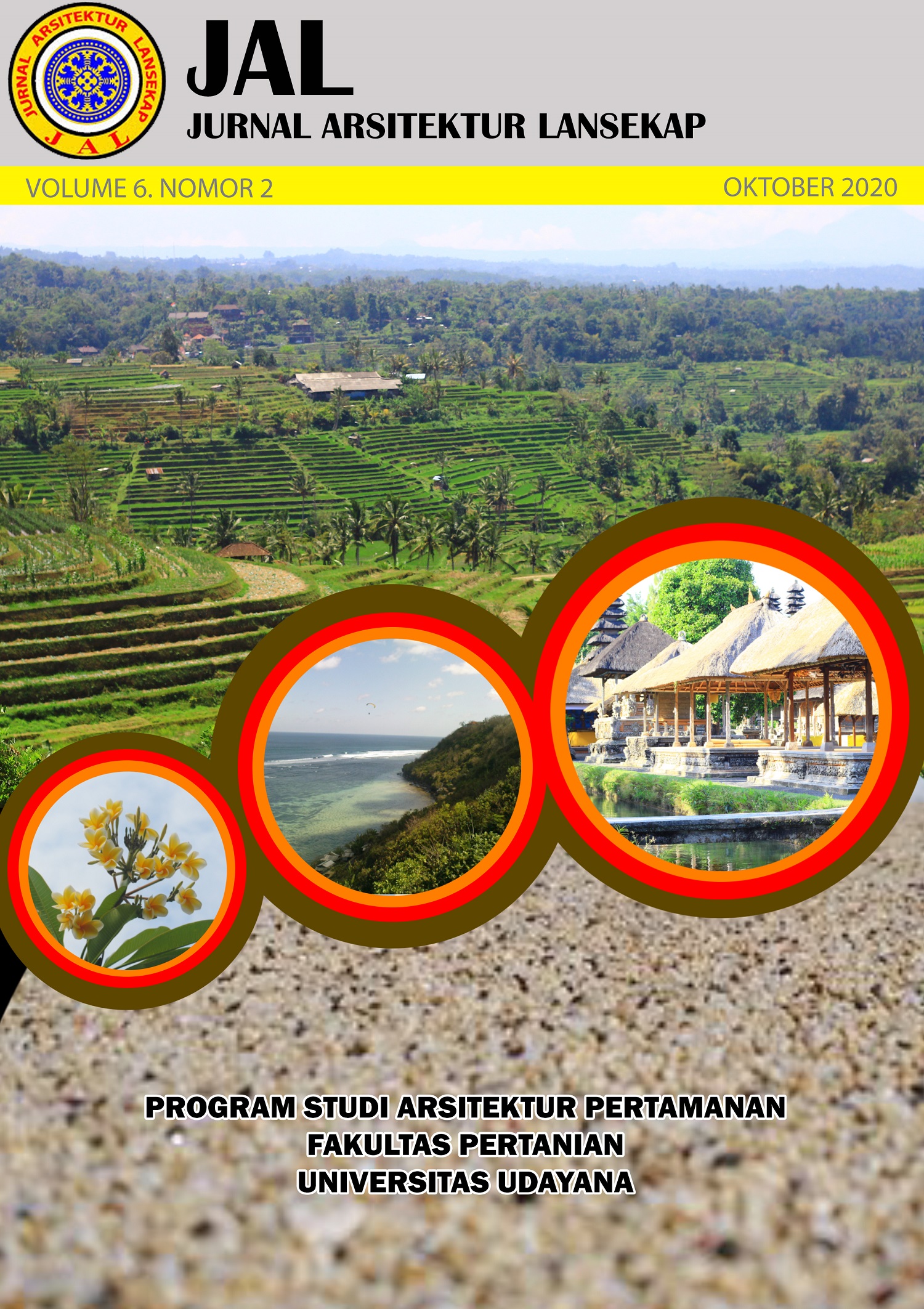Kajian fungsi sosial-budaya ruang terbuka hijau publik Kecamatan Serpong, Kota Tangerang Selatan
Abstract
Study of the socio-cultural function of public green open space in Serpong District, South Tangerang City. Urban communities have a variety of activities and routines with high mobility. It takes a balance between busy activities and leisure activities where people have the freedom to communicate and interact in space. The area of public green open space in Serpong District has reached 28% of the total required by Law no. 26 article 29. Most of the green open space is located in certain housing areas, so that its utilization is more focused on residential residents. . Based on these facts, this study aims to discuss the extent to which the socio-cultural functions that must be carried out by public green open space outside of residential areas can meet the needs of people who live outside the existing residential areas. A study on the social functions of public green open space will be carried out in Serpong District, South Tangerang City, with samples of City Forest 2, Health Park, and Peace Park. This study used survey method using data collection instruments in the form of observations and questionnaires which were scored based on a Likert scale. Data analysis technique is using proportion (percentage) or frequency. From the research results, it is known that the social function of public green open space in City Forest 2, Health Park, and Peace Park has been achieved, namely as a communication medium for city residents, describing local cultural expressions, recreation areas, and educational and research facilities.
Downloads
References
Dollah, Aris Sakkar. 2017. Analisis RTH dari Aspek Keterlaksanaan Fungsi Sosial di Kota Makassar. Jurnal Ilmu Arsitektur. Universitas Muhammadiya Makssar. ISSN 2614-3976.
Dwiyanto, Agung. 2009. Kuantitas Dan Kualitas Ruang Terbuka Hijau Di Permukiman Perkotaan. Jurnal Nasional Arsitektur: Universitas Diponegoro. 30 (2).
Firmansyah, A. R., Soeriaatmadja, I., & Wulanningsih, R. (2017).. A Set of Sustaiinable Urban Landscape Indicators and Parameters to Evaluate Urban Green Open Space inn Bandung City. IOP Prosiding Conf. Series: Earth and Environmental Science 179 012016.
Hariz, Aulia. 2013. Evaluasi Keberhasilan Taman Lingkungan di Perumahan Padat Sebagai Ruang Terbuka Publik Studi Kasus: Taman Lingkungan di Kelurahan Galur, Jakarta Pusat. Jurnal Perencanaan Wilayah dan Kota 24 (2).
Ikatan Ahli Perencana Indonesia . 2017. Indonesia Most Livable City Index 2017.
Janti, Suhar. 2014, Analisis Validitas dan Reliabilitas dengan Skala Likert terhadap Pengembangan Si/Ti dalam Penentuan Pengambilan Keputusan Penerapan Strategic Planning pada Industri Garmen, Yogyakarta: Prosiding Seminar Nasional Aplikasi Sains & Teknologi (SNAST) 2014
Joga, Nirwono dan Iwan Ismaun. 2011. RTH 30%! Resolusi (Kota) Hijau. PT. Gramedia Pustaka Utama. Jakarta.
Nasyith, Dzakiy, Ananto Aji, Juhadi. 2020. Analisis Ketersediaan Oksigen Untuk Kebutuhan Ruang Terbuka Hijau di Kota Tangerang Selatan Tahun 2017. Journal Geo Image 9 (1).
Novitasari, Dian Fajar, dan Ardy Maulidy N. 2017. Karakteristik Pengunjung dan Aktivitasnya Terhadap Penggunaan Taman Kota Sebagai Ruang Sosial di Taman Keplaksari Kabupaten Jombang. Jurnal Teknik ITS 6 (2).
Persada, Citra, dkk. 2019. Kajian Fungsi Sosial Budaya, Estetika, dan Ekologi Taman “Hutan Kota” Way Halim Kota Bandar Lampung. Prosiding SINTA 2018, 1. pp. 246-250. ISSN 2655-2914
Kementrian Pekerjaan Umum. 2008. Peraturan Menteri Pekerjaan Umum No. 5/PRT/M/2008 tentang Pedoman iPedoman iPenyediaan dan Pemanfaatan Ruang Terbuka Hijau idi Kawasan Perkotaan. Kementrian Pekerjaan Umum. Jakarta.
Pemerintah Kota Tangerang Selatan. 2019. Peraturan daerah Tangeraang Selatan No 9 Tahun 2019 tentang perubahan atas peraturan daerah no 15 tahun 2011 tentang reancana tata ruang wilayah kota tangerang selatan tahun 2011-2031. Pemerintah Kota Tangerang Selatan.
Tatang M. Amirin. 2010. Skala Likert : Penggunaannya dan Analisis Datanya. https://tatangmanguny.wordpress. com/2010/11
An author who publishes in the Jurnal Arsitektur Lansekap (JAL) agrees to the following terms:
- Author retains the copyright and grants the journal the right of first publication of the work simultaneously licensed under the Creative Commons Attribution-ShareAlike 4.0 License that allows others to share the work with an acknowledgement of the work's authorship and initial publication in this journal
- Author is able to enter into separate, additional contractual arrangements for the non-exclusive distribution of the journal's published version of the work (e.g., post it to an institutional repository or publish it in a book) with the acknowledgement of its initial publication in this journal.
- Author is permitted and encouraged to post his/her work online (e.g., in institutional repositories or on their website) prior to and during the submission process, as it can lead to productive exchanges, as well as earlier and greater citation of the published work (See The Effect of Open Access).
Read more about the Creative Commons Attribution-ShareAlike 4.0 Licence here: https://creativecommons.org/licenses/by-sa/4.0/.







